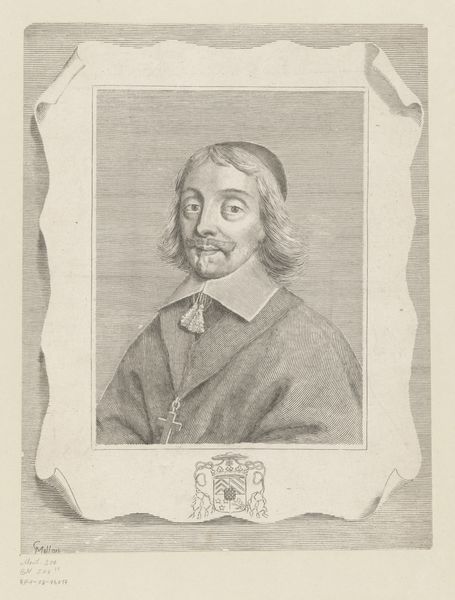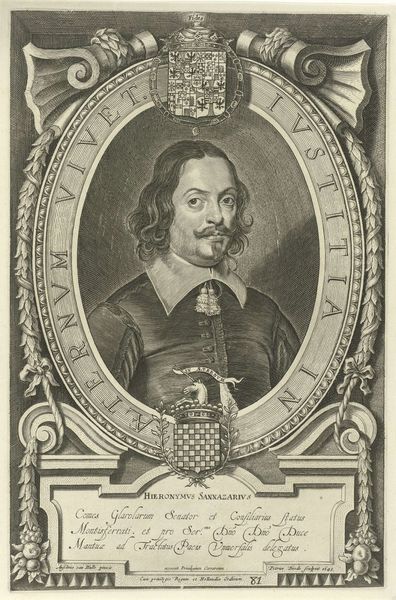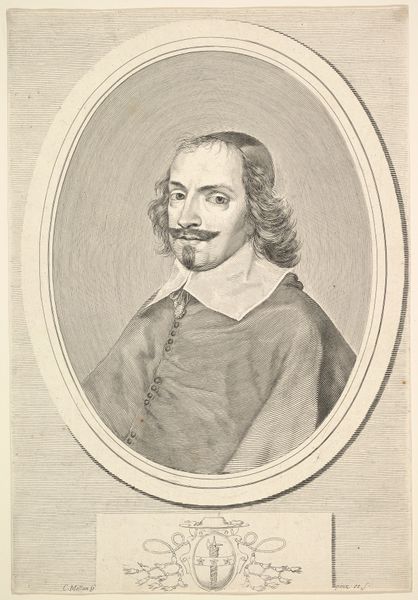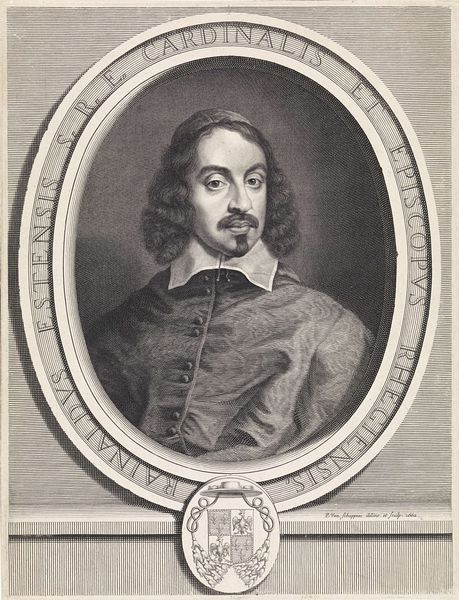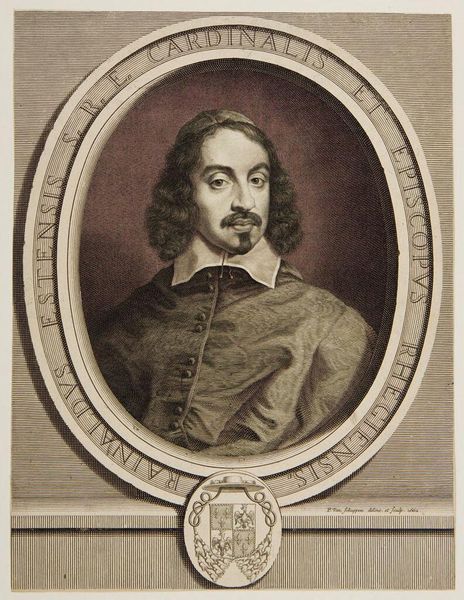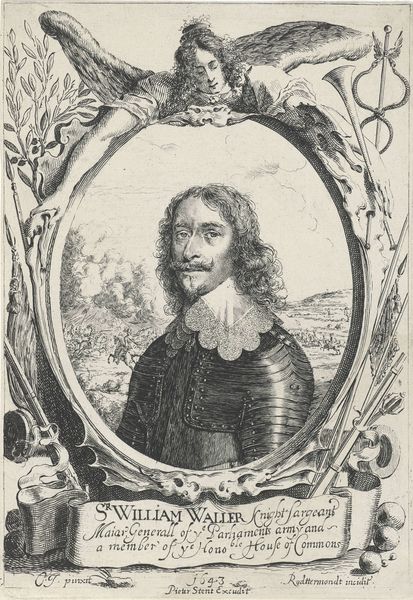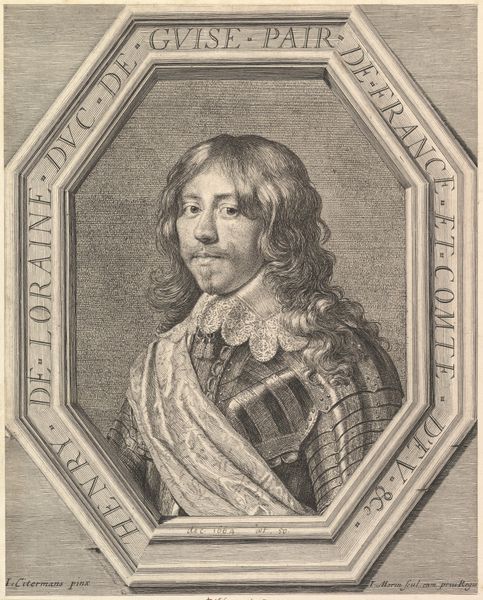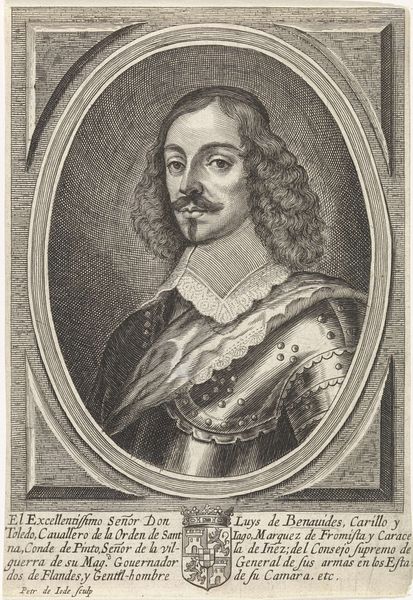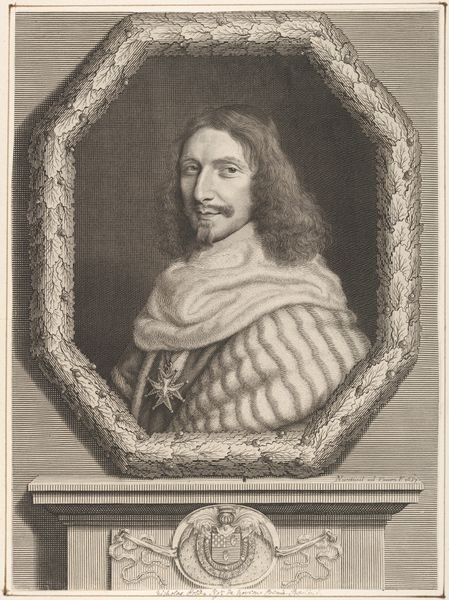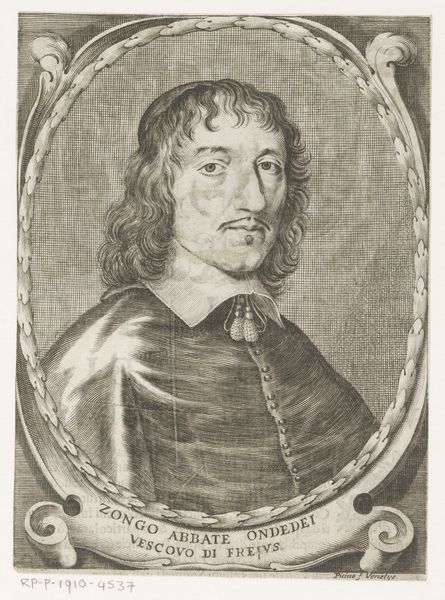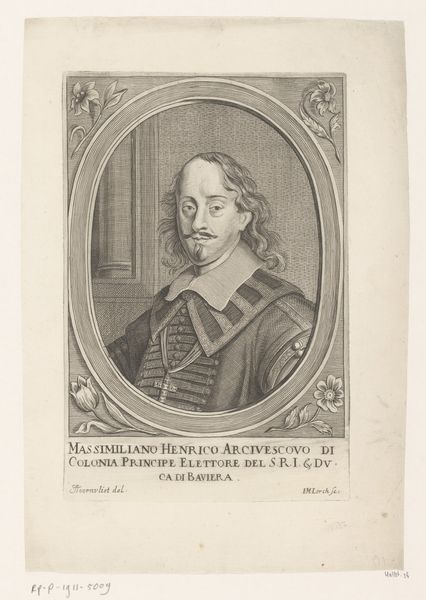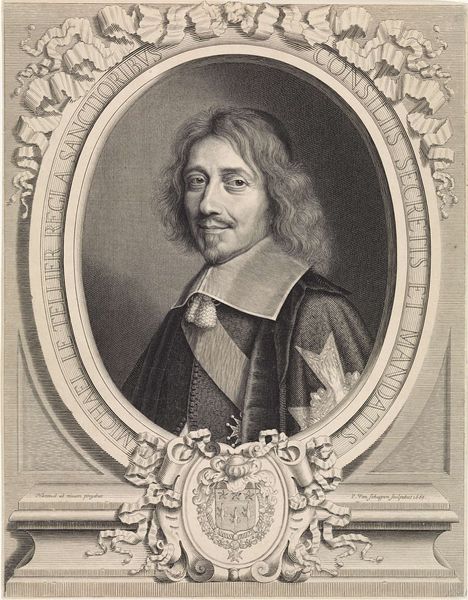
Rainauld d'Este, Cardinal Évêque de Reggio 1720 - 1760
0:00
0:00
drawing, print, intaglio, engraving
#
portrait
#
drawing
#
baroque
# print
#
intaglio
#
engraving
Dimensions: Sheet: 11 5/8 × 15 7/16 in. (29.6 × 39.2 cm)
Copyright: Public Domain
Curator: Look, this print, “Rainauld d’Este, Cardinal Évêque de Reggio,” created sometime between 1720 and 1760 by Grégoire Huret, really speaks to the power dynamics embedded within Baroque portraiture. It’s currently held at the Metropolitan Museum of Art. Editor: My immediate impression? Quiet intensity. The fine lines of the engraving capture an incredible likeness and those piercing eyes, set within such a decorative frame, really draw you in. There’s a vulnerability there too, I think, despite the Cardinal’s obvious status. Curator: Absolutely, and the strategic deployment of prints such as this during the Baroque period served to reinforce ecclesiastical authority, visually circulating the Cardinal’s image and projecting a specific persona. Think of the semiotics here – his clothing, the carefully rendered textures, they all reinforce the carefully curated image of power. How does this imagery participate in power dynamics across lines of class and gender? Editor: Right, and while it upholds that hierarchical structure, the artist, Huret, seems to also subtly individualize the sitter. The softness of the hair, the almost melancholy cast of the face - are we invited to consider the personal toll of religious authority here? Could there be a reading against the grain, where this carefully constructed facade momentarily cracks to allow humanity to peek through? It all becomes quite telling. Curator: That reading resonates, especially when we situate it in the context of religious reformation occurring across Europe, in particular amongst differing stances toward the Catholic Church at the time. These printed images were both an assertion of power and perhaps, simultaneously, a subconscious plea for allegiance from its subjects. How did Huret view his own position when creating it, caught in that historical and political tug-of-war? Editor: It makes me reflect on how images – then, as now – participate in complex social negotiations. Perhaps this print served multiple purposes at once – cementing authority but also, inviting a form of empathetic connection with this very powerful man. Curator: Precisely. I appreciate the multiple layers it exposes about power, representation, and reception. Editor: Yes, considering the socio-political forces intertwined within this portrait allows me to see it in a new light.
Comments
No comments
Be the first to comment and join the conversation on the ultimate creative platform.
